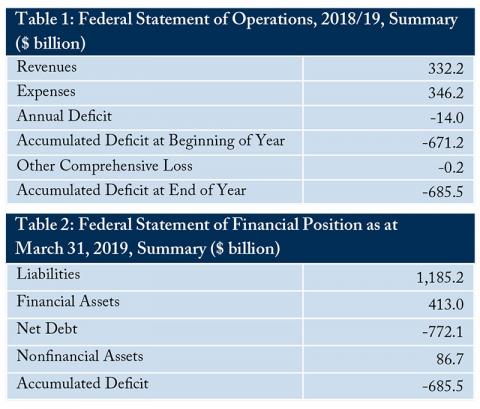To: Canadians Concerned about their Governments’ Bottom Lines
From: William B.P. Robson
Date: January 21, 2020
Re: Net Debt, Capital Assets and Net Worth – Making Sense of the Numbers
Are you uneasy about the fiscal condition of Canada’s governments? How so many run in the red, and may struggle to provide services at tolerable tax rates in the future?
If so, you are not alone. And if you’re also unsure about where to find good numbers – reliable measures of their fiscal condition – you are also not alone.
A series of C.D. Howe Institute reports document that many governments – especially cities at budget time – present less accessible and reliable information than they should. Still, there is good news. Canada has well-developed public sector accounting standards. Our governments usually adhere to them. And their financial statements are readily available. Search “Canada federal government annual report,” say, and up pops a link to Ottawa’s financial statements for the fiscal year that ended last March 31. The same works for any province, territory or municipality.
Those statements typically got a clean audit, and follow a straightforward format. Like that of the federal government (summarized in Table 1), the statement of operations shows revenues and expenses for the year. The difference between them – the government’s surplus or deficit – will equal, or at least reconcile with, the change in its accumulated surplus or accumulated deficit during the year. The statement of financial position (Table 2 summarizes Ottawa’s) shows a government’s assets and liabilities. The difference between them is the government’s accumulated surplus or deficit.
The accumulated surplus or deficit is the definitive expression of a government’s net worth: its capacity to deliver services. If a government’s assets – all its assets, financial and non-financial – exceed its liabilities, it has an accumulated surplus. Reassuring for its citizens. If its liabilities exceed its assets – as do Ottawa’s – it has an accumulated deficit. Less reassuring.
Close by the accumulated surplus or deficit on a government’s balance sheet, users also find a number showing the difference between financial assets alone and liabilities. Since most governments’ financial assets are smaller than their liabilities, this number is usually labelled “net debt.” This terminology is not always clear. (The federal government’s own statements refer to its accumulated deficit as “federal debt”.) What is the difference, and which should we pay attention to?
The difference between the two numbers is that accumulated surplus or deficit references total assets, including non-financial assets: buildings, infrastructure, machinery and so on. Net debt references only financial assets.
In thinking about a government’s capacity to deliver services, it makes more sense to include capital assets. Without them, services would cease. In thinking about a government’s capacity to meet its financial obligations, it makes more sense to leave them out. Most government buildings and infrastructure generate no revenue, and would realize less than their depreciated book value if sold.
Discussions about measuring and presenting governments’ fiscal conditions continue, including at the Public Sector Accounting Board. Should the tally of nonfinancial assets include intangibles? How should we show deferred compensation such as pensions? And should the bottom line highlight accumulated surplus/deficit or net debt?
My choice for the bottom line would be accumulated surplus or deficit – the statement of net worth most informative about governments’ ongoing capacity to deliver services. If their capacity to make payments is your main concern, disregard nonfinancial assets, and compare net debt to such measures as actual or potential revenue. Worried our governments’ fiscal condition? Either way, you’ve got the numbers.
Source: Annual Financial Report of the Government of Canada, 2018-2019.
William B.P. Robson is President and CEO of the C.D. Howe Institute.
To send a comment or leave feedback, email us at blog@cdhowe.org.
The views expressed here are those of the author. The C.D. Howe Institute does not take corporate positions on policy matters.






